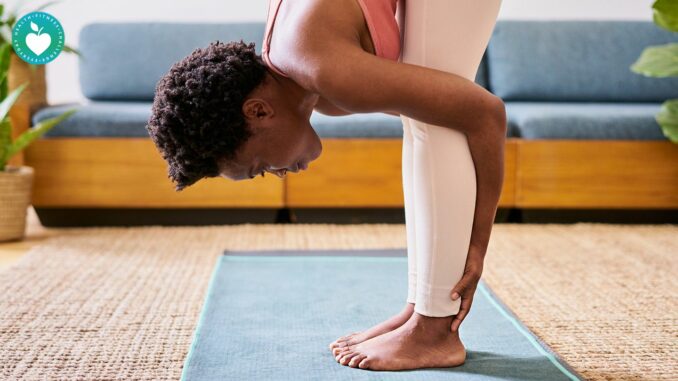
Introduction: Flexibility is a cornerstone of physical fitness, contributing to improved performance, reduced risk of injury, and enhanced overall well-being. Whether you’re an athlete striving for peak performance or a desk-bound individual seeking relief from stiffness and discomfort, incorporating flexibility training into your routine can yield significant benefits. In this extensive guide, we’ll explore the principles of flexibility, delve into effective stretching techniques, discuss strategies for enhancing mobility, and provide practical tips for integrating flexibility training into your lifestyle.
Understanding Flexibility: Flexibility refers to the ability of your muscles and joints to move through a full range of motion without restriction or discomfort. It encompasses various components, including muscular flexibility, joint mobility, and neuromuscular control. Improving flexibility involves elongating muscles, releasing tension, and increasing the extensibility of soft tissues, allowing for greater mobility and improved movement patterns.
Effective Stretching Techniques: Stretching is a fundamental component of flexibility training, helping to lengthen muscles, improve joint range of motion, and alleviate muscle tightness. Incorporating a variety of stretching techniques into your routine can target different muscle groups and enhance overall flexibility. Here are some effective stretching techniques to consider:
- Static Stretching: This involves holding a stretch position for a prolonged period (typically 15-30 seconds) to lengthen muscles and improve flexibility. Common static stretches include hamstring stretches, quadriceps stretches, calf stretches, and chest stretches.
- Dynamic Stretching: Dynamic stretches involve moving through a range of motion in a controlled manner, gradually increasing the stretch without bouncing or jerking movements. Examples of dynamic stretches include leg swings, arm circles, walking lunges, and trunk rotations.
- PNF Stretching: Proprioceptive Neuromuscular Facilitation (PNF) stretching techniques involve alternating between contraction and relaxation of the muscles to enhance flexibility. This can be achieved through techniques such as contract-relax, hold-relax, and contract-relax-agonist-contract.
- Foam Rolling: Foam rolling, also known as self-myofascial release, involves using a foam roller to apply pressure to tight or sore muscles, releasing tension and improving flexibility. Foam rolling can be particularly beneficial for targeting trigger points and adhesions in the muscles and fascia.
- Yoga and Pilates: Both yoga and Pilates incorporate a combination of stretching, strengthening, and breathing exercises to improve flexibility, mobility, and overall body awareness. Practicing yoga poses (asanas) and Pilates exercises regularly can enhance flexibility and promote relaxation and stress relief.
Strategies for Enhancing Mobility: In addition to stretching, there are several strategies you can implement to enhance mobility and improve overall flexibility:
- Regular Exercise: Engaging in regular physical activity that incorporates a variety of movements can help maintain joint mobility and prevent stiffness. Incorporate activities such as walking, swimming, cycling, and dancing into your routine to promote overall mobility.
- Joint Mobilization Exercises: Perform specific exercises designed to mobilize and lubricate the joints, such as shoulder circles, hip circles, wrist circles, and ankle circles. These exercises help improve joint range of motion and reduce stiffness.
- Dynamic Warm-Up: Prior to engaging in physical activity or exercise, incorporate a dynamic warm-up routine that includes dynamic stretches and mobility exercises. This helps prepare the body for movement, increases blood flow to the muscles, and enhances flexibility.
- Gradual Progression: When working to improve flexibility, it’s important to progress gradually and avoid pushing into pain or discomfort. Start with gentle stretches and gradually increase the intensity and duration as your flexibility improves over time.
- Consistency: Consistency is key when it comes to improving flexibility. Incorporate stretching and mobility exercises into your daily routine, even if it’s just for a few minutes each day. Over time, consistent practice will lead to noticeable improvements in flexibility and mobility.
Practical Tips for Integration: Integrating flexibility training into your lifestyle doesn’t have to be complicated or time-consuming. Here are some practical tips for incorporating flexibility exercises into your daily routine:
- Morning Stretch Routine: Start your day with a short stretching routine to wake up your muscles, increase blood flow, and promote flexibility. Focus on targeting areas of tightness or stiffness, such as the back, hips, and shoulders.
- Midday Movement Breaks: Take regular breaks throughout the day to stretch and move your body, especially if you have a sedentary job or spend long hours sitting at a desk. Set a timer to remind yourself to stand up, stretch, and move around every hour.
- Evening Relaxation Ritual: Wind down in the evening with a gentle stretching or yoga routine to release tension, relax the body, and promote restful sleep. Incorporate deep breathing and relaxation techniques to enhance the calming effects of your evening routine.
- Incorporate Stretching Into Workouts: Include stretching exercises as part of your warm-up and cool-down routines before and after workouts. This helps prepare your body for exercise, prevent injury, and promote recovery and relaxation post-workout.
- Mindful Movement Practices: Practice mindfulness and body awareness during stretching and flexibility exercises, paying attention to the sensations in your body and breathing deeply into areas of tension or tightness. Focus on relaxation and letting go of stress and tension with each exhale.
Conclusion: Improving flexibility is a journey that requires patience, consistency, and mindful practice. By incorporating a variety of stretching techniques, mobility exercises, and practical strategies into your daily routine, you can enhance flexibility, reduce stiffness, and unlock greater freedom of movement. Whether you’re an athlete looking to improve performance, a fitness enthusiast seeking to prevent injury, or someone simply wanting to move with greater ease and comfort in daily life, prioritizing flexibility training can lead to profound improvements in physical and mental well-being. So, take the time to invest in your flexibility, and enjoy the benefits of a more limber and agile body for years to come.